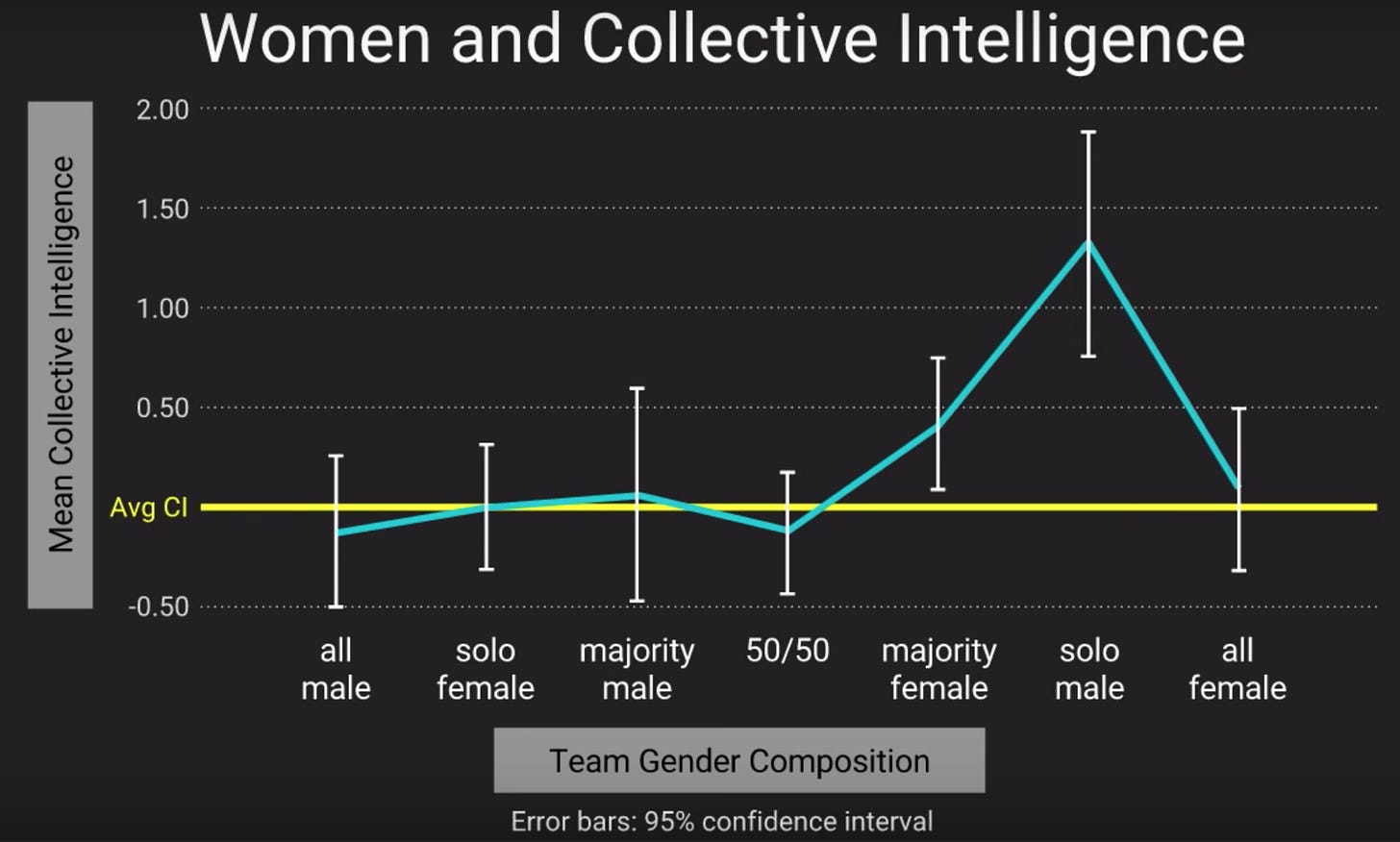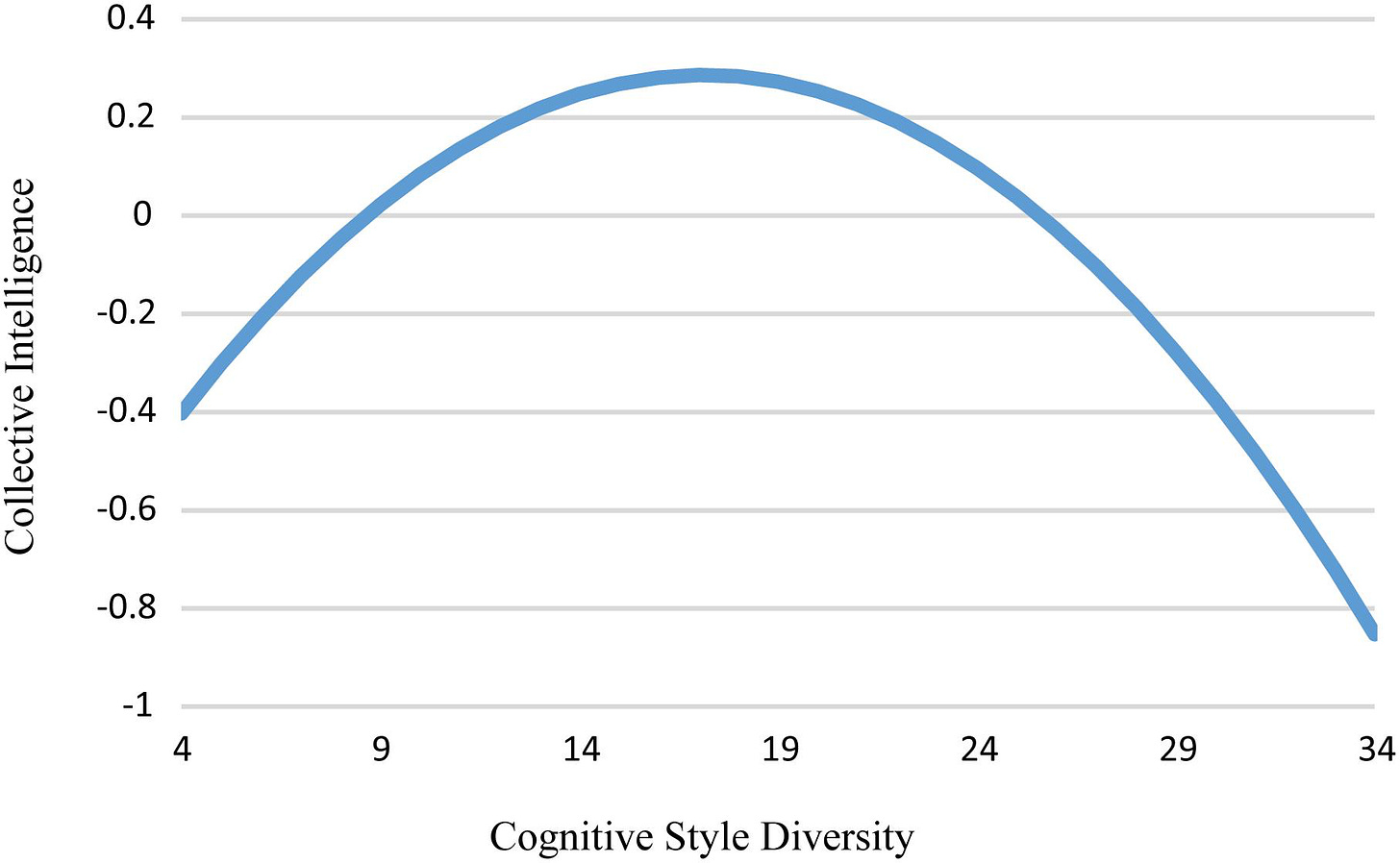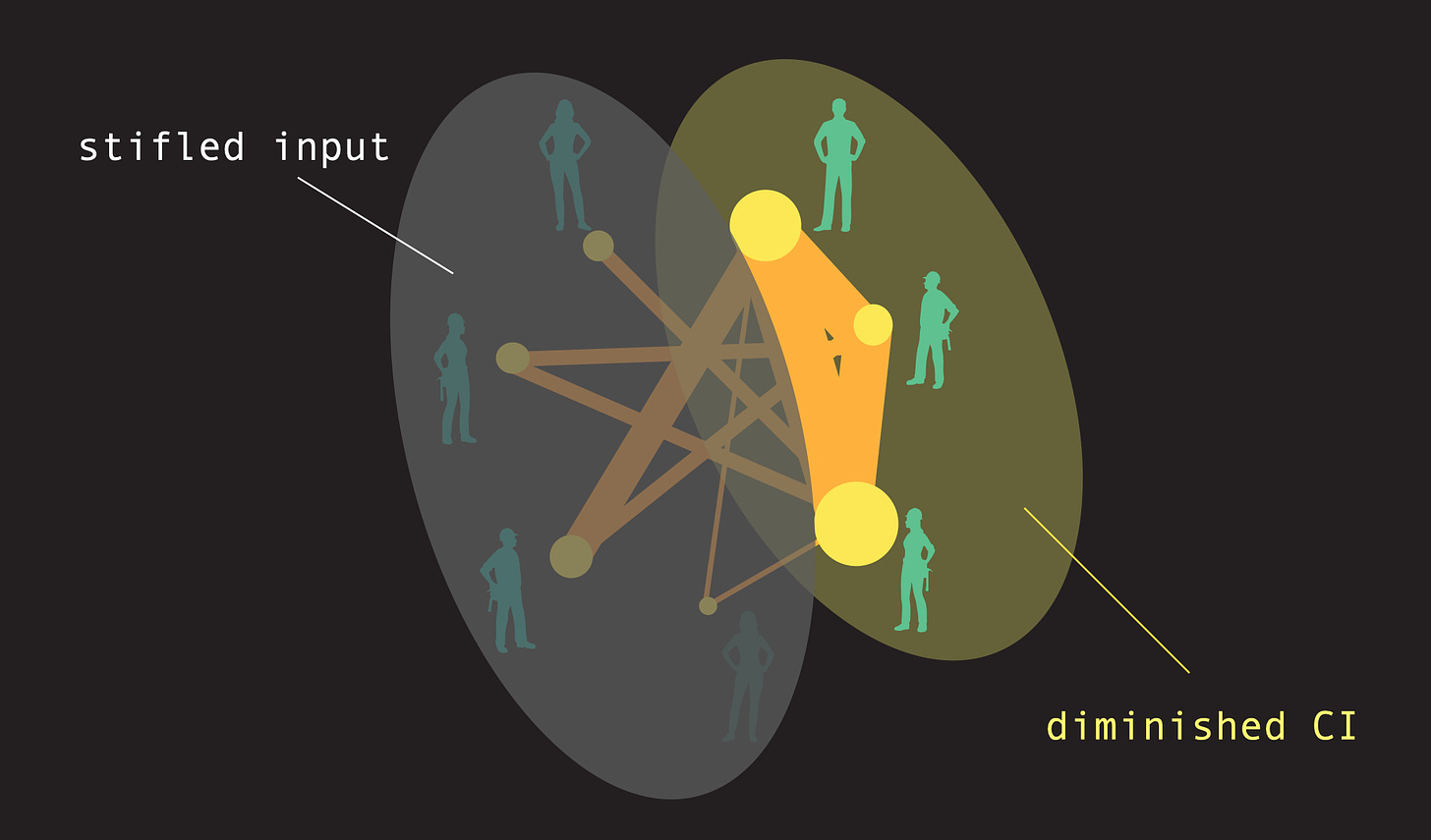Raising the intelligence of teams
"Cooperation for mutual benefit, a survival strategy very common in natural systems, is one that humanity needs to emulate." — Eugene Odum
"We are constantly fragmenting our limited attentional focus with both internal and external distractions and multiple tasks, and there is a cost for this." —Adam Gazzaley
Teams are the ‘organs’ of organisations. 83% of us do most of our work in teams. 64% of us belong to more than one. Teams are our locus of work and our axis of engagement. Teams provide the bulk of what organisations need to function (1).
In knowledge work, teams process information. They extract information from their environment, they encode it into language and symbols, they store it, they retrieve it, and they work with it to produce outputs: new code, reports, knowledge, ideas, strategies, innovations, actions, behaviours etc.
Teams are a cognitive entity.
Like general intelligence, which is a measure of an individual’s cognitive ability, a team’s cognitive ability can be also be measured. This measure is called collective intelligence (CI) (2).
Unlike general intelligence, which is mostly a lottery of birth, collective intelligence can be improved.
By understanding the mechanisms that underpin collective intelligence, we can try to devise interventions to improve it. Given that team performance is so critical to organisational performance, it is imperative that we do so.
What is collective intelligence?
A group’s collective intelligence refers to the general ability of the group to perform a wide variety of tasks. It is a property of the group itself, not just the individuals in it (3).
Traditional measures such as social cohesion, motivation and group satisfaction do not predict high team performance. Collective intelligence is quite different to relationship quality.
Although collective intelligence research is young, it is nevertheless pointing to some practical interventions. Let’s explore them.
Increase the number of women
Want to improve the collective intelligence of a team? Then put more women on it. Seriously.

The number of women on a team is a significant predictor of high collective intelligence. The exception is when all the team are women, at which point collective intelligence drops again. For some reason, it is beneficial to keep a token man around4.
Women raise collective intelligence due to their superior ability to pick up nonverbal cues from others. They have, on average, better social sensitivity than men (discussed below).
Optimise cognitive diversity
Having a diversity of cognitive styles — the way in which team members encode, organise, and process information — can enhance collective intelligence; but only to a point.

Studies (5) reveal that too much diversity introduces coordination costs. Team members with different perspectives have a hard time understanding each other and collective intelligence plummets.
Like so much else in life, it’s about finding the right balance.
Improve communication flow
Collectively intelligent teams communicate well and distribute conversation.

Teams in which a few people dominate activity are, in general, less collectively intelligent than those in which the activity is more equally spread among group members.
This is the case for both face-to-face and online collaboration (6).
Improving communication practices and rituals are an obvious avenue for CI improvement (7).
Improve social sensitivity skills
Social sensitivity (8) — the ability to put ourselves in the mind of others and ‘tune in’ to their mental states — correlates highly with collective intelligence. Women usually score higher in this than men.

Socially sensitivity is usually measured via the Reading the Mind in the Eyes Test, which you can take yourself for free. It measures how well you can read the emotions of people, an ability called ‘Theory of Mind’ (ToM) (9).
Socially sensitive team members attend to the interpersonal dynamics in teams and create a positive interpersonal atmosphere, which is conducive to better task performance.
Recent research has uncovered an important constraint: in general, team members cannot compensate for the lack of social sensitivity of other team members (10). Harmonious interpersonal interactions require that even the least socially sensitive member scores relatively highly.
Even when one member is unable to ‘tune in’ to the others, the collective intelligence of their team suffers.
Those ‘soft skills’: they’re critical!
Mindfulness training
Good results unlocking collective intelligence has been achieved through teaching mindfulness techniques (11).
Mindfulness helps us to regulate our emotions and behaviour. It can help us to be better listeners, to remain calmer, to be more empathetic, and to become more reflective.
Mindfulness helps us to take control of our distracted minds; to create the space required to ‘tune in’ to others.
It offers a simple pathway to improved team performance.
Posted by John Dobbin.
Post Bureaucracy
Learn more:
If you are new to mindfulness, want to understand more about it, or are seeking to enrich your existing practice, then I highly recommend Sam Harris’s Waking Up app. Please be my guest and redeem one month’s free trial.
Keep an eye out for the new journal Collective Intelligence: a transdisciplinary journal devoted to advancing the theoretical and empirical understanding of group performance in diverse systems, from adaptive matter to cellular and neural systems to animal societies to all types of human organizations to hybrid AI-human teams and nanobot swarms.
References:
1. ADP Research Institute. The Global Study of Engagement 2018 Technical Report
2. Anita Woolley et al., ‘Evidence of a Collective Intelligence Factor in the Performance of Human Groups’, Science (New York, N.Y.) 330 (1 October 2010): doi:10.1126/science.1193147.
3. ibid.
4. Wolley, A. W., 'What makes one team smarter than another?', Google re:Work event (Sept 2016): https://rework.withgoogle.com/blog/what-makes-one-team-smarter-than-another
5. Ishani Aggarwal et al., ‘The Impact of Cognitive Style Diversity on Implicit Learning in Teams’, Frontiers in Psychology 10 (2019), doi:10.3389/fpsyg.2019.00112.
6. David Engel et al., ‘Reading the Mind in the Eyes or Reading between the Lines? Theory of Mind Predicts Collective Intelligence Equally Well Online and Face-To-Face’, PLOS ONE 9, no. 12 (2014): adoi:10.1371/journal.pone.0115212.
7. I will discuss particular techniques in future transmissions.
8. Premack, D., and Woodruff, G. (1978). ‘Does the chimpanzee have a theory of mind?’ Behav. Brain Sci. 1, 515–526. doi: 10.1017/S0140525X00076512
9. Importantly, for our increasing virtualised work, the ToM measure is equally predictive of collective intelligence in both face-to-face and online groups, even though the online groups communicate only via text and never see each other at all. David Engel et al., (2014)
10. Nicoleta Meslec, Ishani Aggarwal, and Petru L. Curseu, ‘The Insensitive Ruins It All: Compositional and Compilational Influences of Social Sensitivity on Collective Intelligence in Groups’, Frontiers in Psychology 7 (2016), doi:10.3389/fpsyg.2016.00676.
11. Greiser et al., Cited in, 'Mindfulness Can Help Unlock Your Company’s Collective Intelligence'. Knowledge@Wharton (Feb 7, 2020)
Image Credits:
1. Women and Collective Intelligence: Wolley, A. W., 'What makes one team smarter than another?', Google re:Work event (Sept 2016)
2. Cognitive Style Diversity: Ishani Aggarwal et al., (2019)
3. Communication Flow: From my training slides on Alex ‘Sandy’ Pentland’s work on Human Dynamics
4. Reading the Mind in the Eyes: Collage assembled from royalty-free portraits from Pixabay.
Thank you!
Your details have been submitted and we will be in touch.